To curator Daniel H. Rey, our questions and our ability to ponder the world we live in are what ultimately binds us together. In the project WAW - we are wondering, he creates room for artists to ask questions, inviting the audience to reflect on this past year and revisit their intentions as 2021 unfolds. WAW is part of #YouthCuratingYouth, a concept currently developed by the twenty-two-year old curator based in the United Arab Emirates. The curators aims at working alongside artists within his own age group and 'catapult' artistic careers from the Global South.
Aged 18 to 22, the six young artists who are part of this exhibition - Ziad Al Najjar, Maryam AlHuraiz, Mariam Alkatheeri, Lubnah Ansari, Zeid Jaouni, and Lily Wallis - are UAE citizens, as well as long-term residents whose work is shown for the first time. The digital exhibition on Art Curator Grid presents their work accompanied by questions they are not afraid to ask.
See below for the interview we carried out with Paraguayan-Colombian curator Daniel H. Rey about WAW, youth and the UAE art scene:
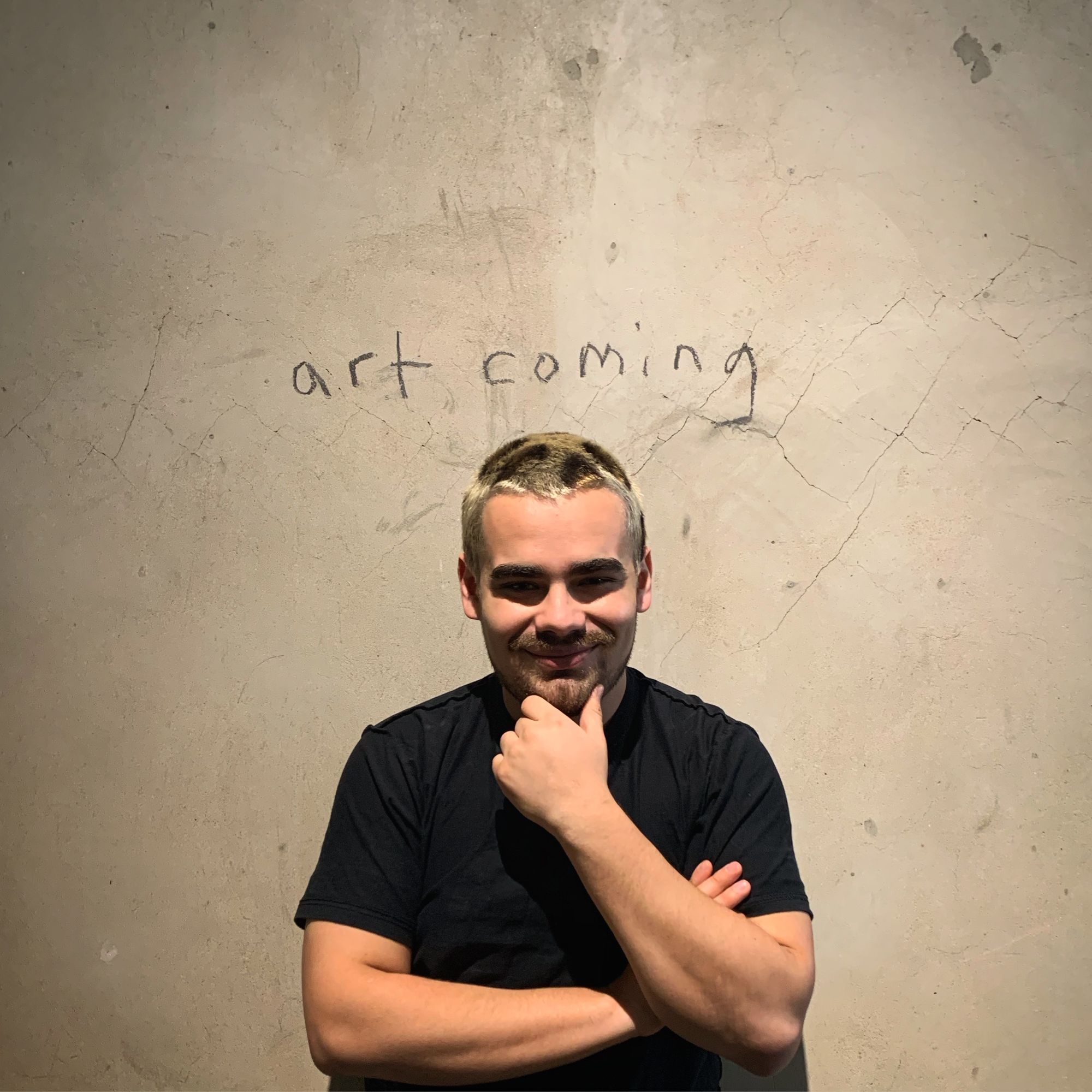
Julia Flamingo for Art Curator Grid - The main objective of this project is to present the work of emerging and young artists who live in the United Arab Emirates. Also as the creator of #YouthCuratingYouth and managing editor of Global Art Daily, you have been working hard to shed light on the UAE art scene. Can you share your opinion about the overall support and other significant efforts given to the work of UAE artists?
Daniel H. Rey - The UAE embodies what I call Triple Youth: young people, in a young art scene, in a young nation-state. Hence, the hashtag I started using: #YouthCuratingYouth. More than a platform, this hashtag is a methodology to counter generational hierarchies across art scenes.
The thing about youth, which excites me, is that there is always space to grow, and mature. I have been in the UAE for five years, which is already 10% of the country’s age as a nation-state (imagine!). I am currently participating in an art ecosystem that is more integrated than when I arrived, and I do not plan on leaving anytime soon. The very fact that a twenty-two-year-old curator like myself can come in and gain support from venues, artists, and the media in record time is fantastic (and quite rare abroad).
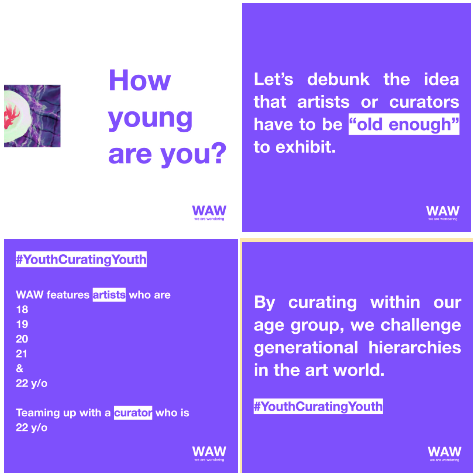
The UAE’s leadership has made large efforts to advance the arts here, from global museums to art fairs and education. The examples exist, they have both challenged us and enriched us. The arts, as a field, demand call and response. Leaders already did a big part and “called us”, which is the first step. Now we are coming in with grassroots platforms, alternative spaces, and literally: responding. Examples of this response have been frequent and big gamechangers.
Fellowships wise, the Jameel Arts Centre has run twice already the Youth Assembly, which is becoming a key incubator for young curators in the UAE. At the Assembly, I was lucky to be involved in curating and commission within my age group. Similarly, the Salama bint Hamdan Emerging Artists Fellowship (SEAF) has catapulted the careers of impressive contemporary artists in the country that I hope to work with soon.
On a grassroots level, there is 101, which is the first platform for ethical collecting in the Gulf. Founded by curator Munira Al Sayegh and writer Gaith Abdulla, 101 organizes curated sales every three months and features non-gallery-represented artists based in this region. The platform challenges the 50/50 gallery model and maximizes the resources that artists access with their work. 101 is also pioneering research about collecting practices and art history in the Gulf. I am very happy to be on the team.
It is also important to look at Sa Tahanan Collective, a Filipino diaspora art collective set up by artist Augustine Paredes and curator Anna Bernice. Almost half a million Filipinos live in Dubai. This is the first platform reuniting the Gulf and Global Filipino diaspora. Sa Tahanan Co. focuses on relief sales, curated shows, publications, and performances all over Dubai. They have an exciting journey ahead.
Finally, we could look at Tawahadna, which means “we have united” in Arabic. This is an independent production house specializing in stories of female artists from the MENA region. Stavros Antypas, the founder, has been an active voice about granting visibility to creatives in this region while proposing how to pursue such a visibility. With its own methodology, Tawahadna is educating thousands of us about the challenges, virtues, and dreams of artists in this part of the world.
Many other examples of this “response wave” exist here in the UAE. The realization with them is one: the present is grassroots, and hopefully the future continues to be so. The UAE is a major hub in the Global South and an empowering space for those of us who come from the Global South.
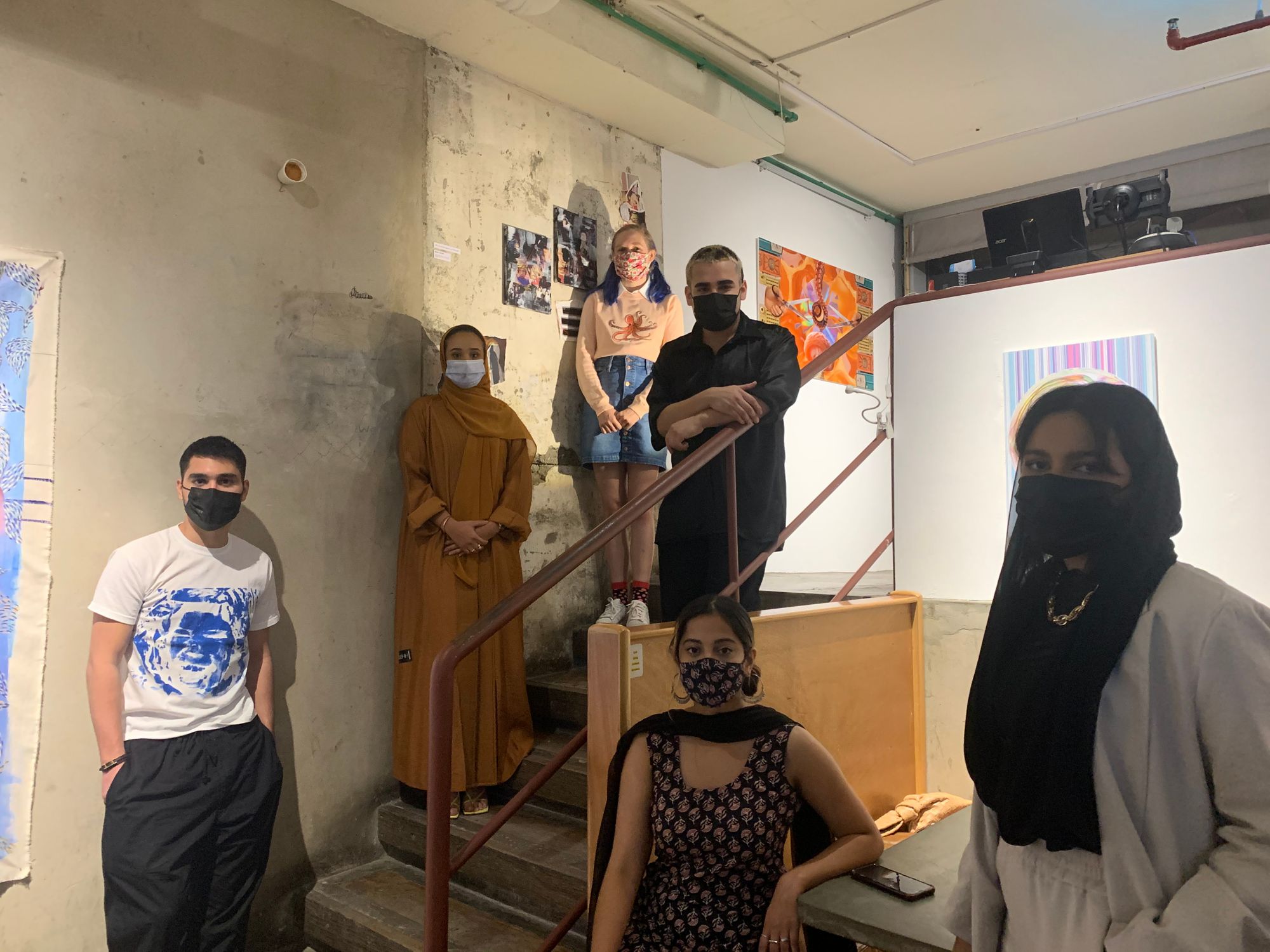
JF - During six weeks, every visitor at maisan15 was confronted with questions asked by the artists, such as “Why do we have gaps in our memories?” or “Is anything stopping you?”. I am very curious to know what kind of answers you had, in which format, and how did they resonate in the work of the artists and in your work as a curator?
DR - In the physical exhibition, the questions were placed as extended labels by the artworks. It was interesting to see plenty of people pause their movement through the cafe or stop halfway a burger bite to read a question. Ephemeral reactions were a big part of the answers we got. Many other visitors took pictures of the questions and put them on their Instagram stories, thus amplifying them to more people and even adding emojis. We knew coming in that we would not be fully able to know every single answer to our questions. But that was the point, we were intentional with our questions so that they start a dialogue with(in) the spectators. I am curious to know how folks left the space wondering more things, new things. A very common reaction to the pieces was “Is this for sale? How much is it?”. This was funny and exciting. I was happy to see that people genuinely wanted these pieces in their homes and collections. I was also entertained to see how the money talk often intersects with the arts, even at the most underground of spaces.
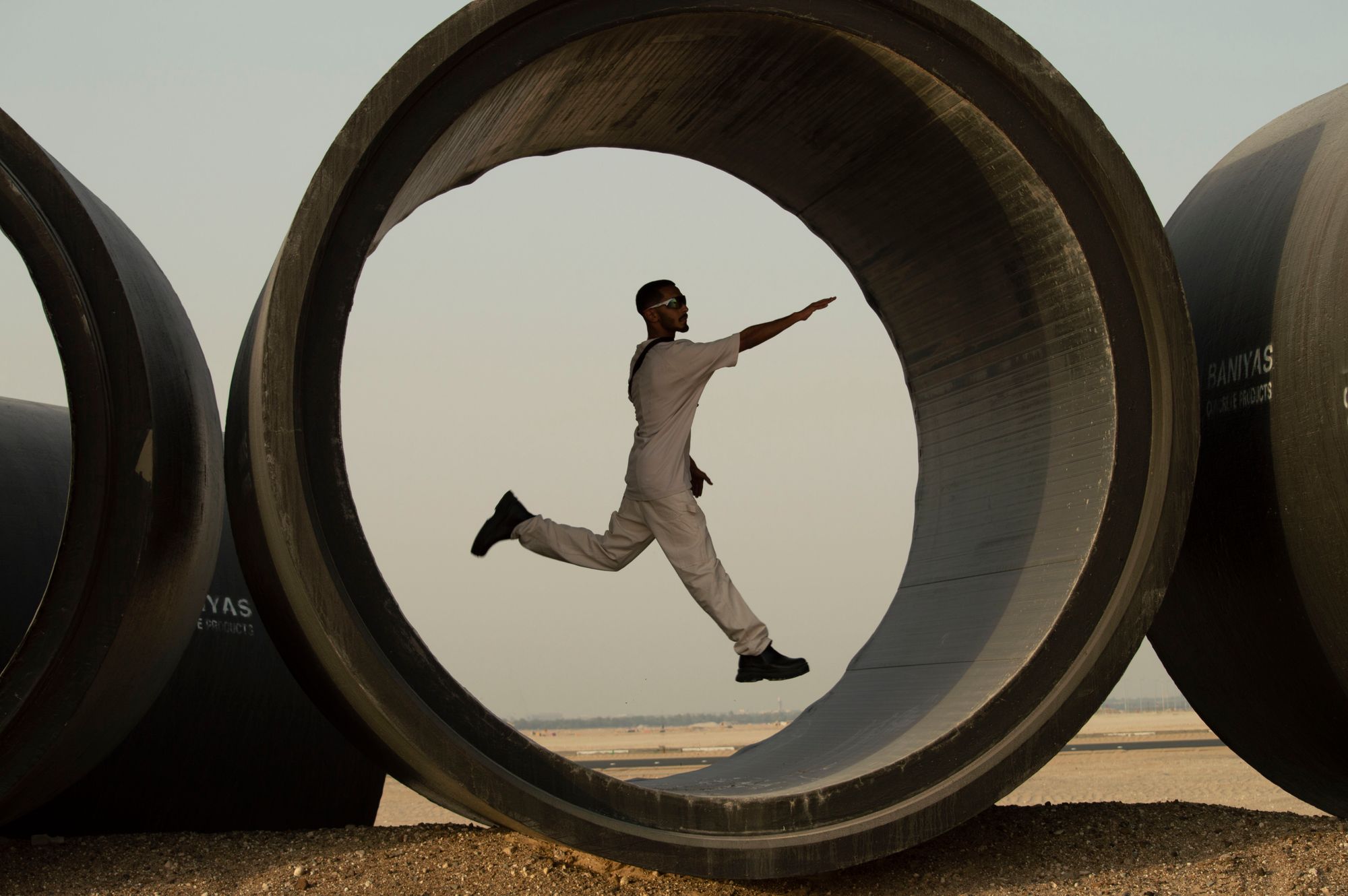
In parallel, to get a more tangible engagement with questions and answers, I activated a chalkboard wall in the cafe and wrote “What are you wondering?”. I left some chalk sticks there and visitors replied in English, in Arabic, with doodles and all sorts of drawings.
To expand on this, questions are the backbone of this exhibition. We see ‘wondering’ as a collective endeavor. The questions we have as humans are a result of shared experiences, and circumstances. It was important for me to include questions as part of this exhibition because I worry that the art world is sometimes too invested in making a “statement”. What happened to... asking?
Precisely because I am a young curator with young artists, questions are giving us a bit more freedom, reducing our pressure when presenting our work. Being a question-asker can be a healthy form of understanding one’s positionality while interacting with audiences. The artists went through multiple rounds of questions and we workshopped them together. It was interesting to engage in a critical exercise all along. The artists and I found that each work was indeed asking something, even if that question was not apparent during the creation process before I encountered the work. With WAW, the main statement I see us making is that our questions, our ability to wonder about something, are what ultimately binds us together. We are wondering about many things.
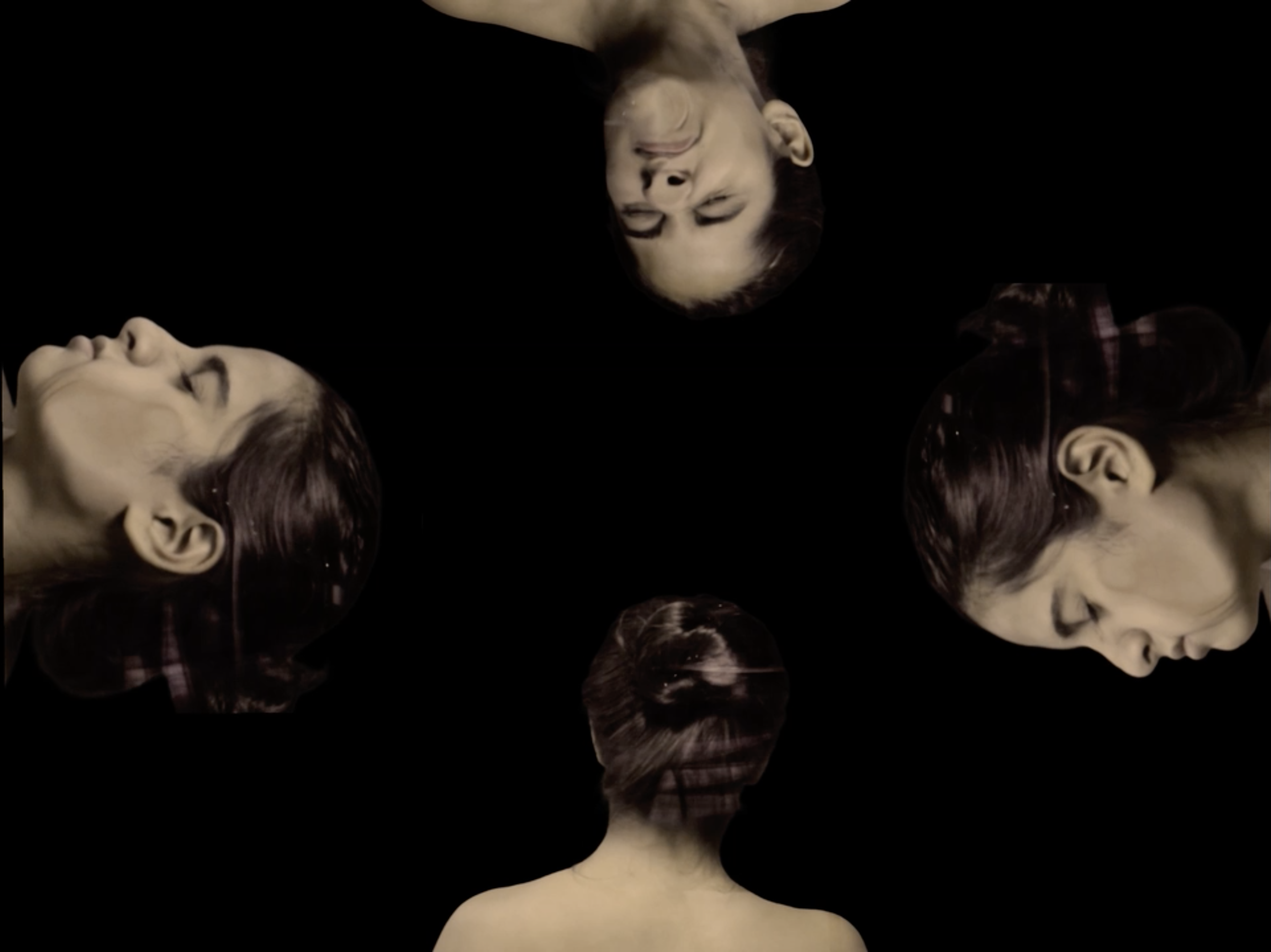
JF - In your curatorial text, you mention that WAW is opposed to “wow” meaning the exhibition proposes food for thought provocations 'Contrary to the mandate of social media to amuse one another with content'. How and why did you conceive this idea?
DR - As a digital native, someone who has lived his whole life with the internet and devices, I have been frustrated to see many artists’ processes and creations be overpowered and overwritten by social media. I worry that many artists' contributions to our world get reductively treated as “content”. I see surprise and amusement as an unspoken mandate of social media that puts pressure on us. Social media, especially Instagram, should grants us more tools, connections, and balanced exposure. And that is precisely my point, instead of trying to “wow” each other all the time, I propose we WAW more, we wonder more, collectively.
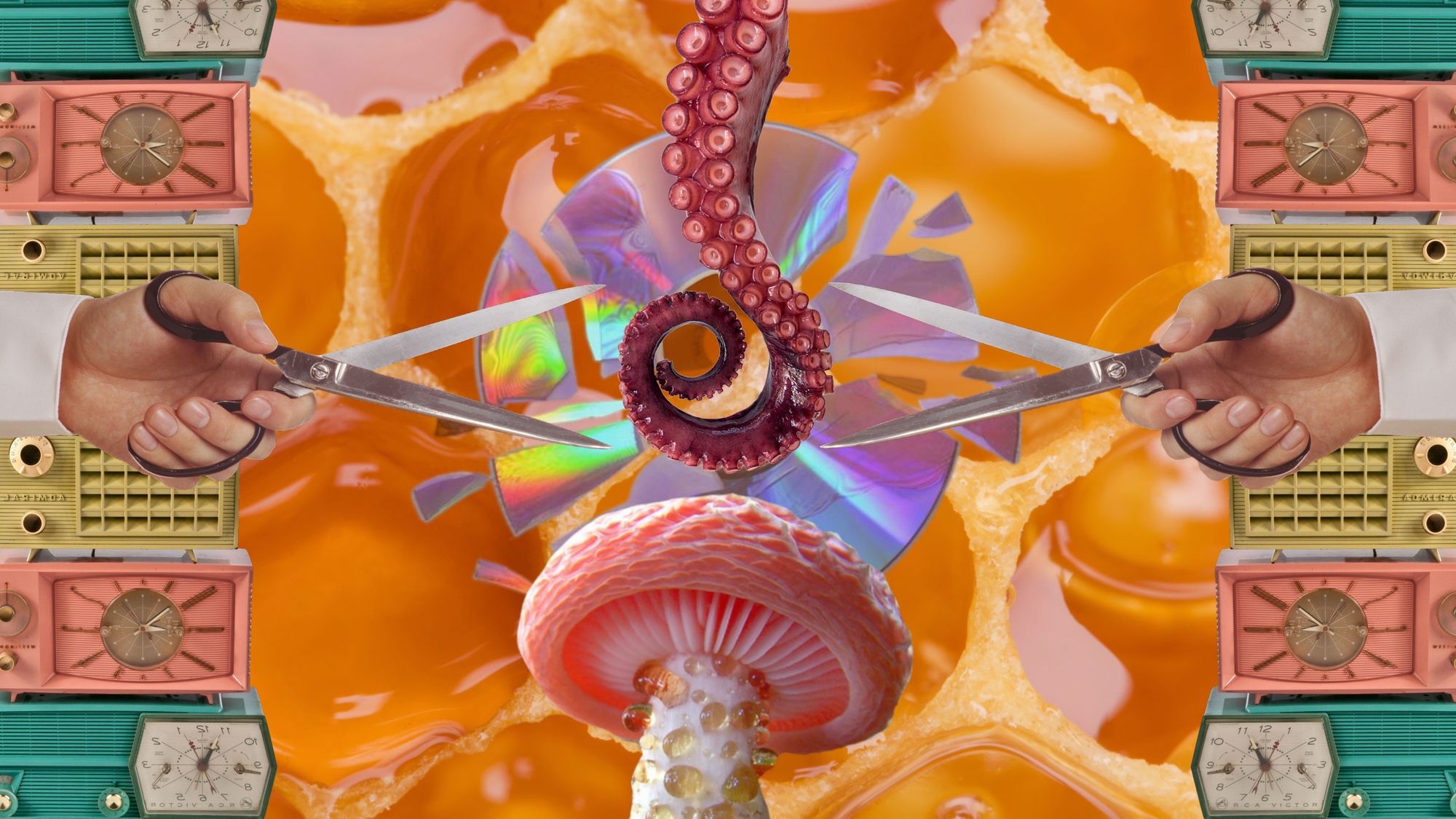
Replacing the “wow” for the WAW confronted me with many decisions. For example, when the exhibition opened, the artwork labels did not have the artists’ social media handles. These were added halfway through as some artists requested them individually for networking purposes. I also created an Instagram account for the exhibition to connect with some visitors and thank our supporters. We survived all of the in-person showcase with just nine posts on our feed. We are posting more now, as we transition to Art Curator Grid, because we understand that online presence comes with more content channels and circulation. I cannot emphasize enough how beautiful and peaceful it was to prepare, present, and enjoy the physical exhibition knowing that yes, social media was there, but our exhibition was not catering to a specific algorithm.
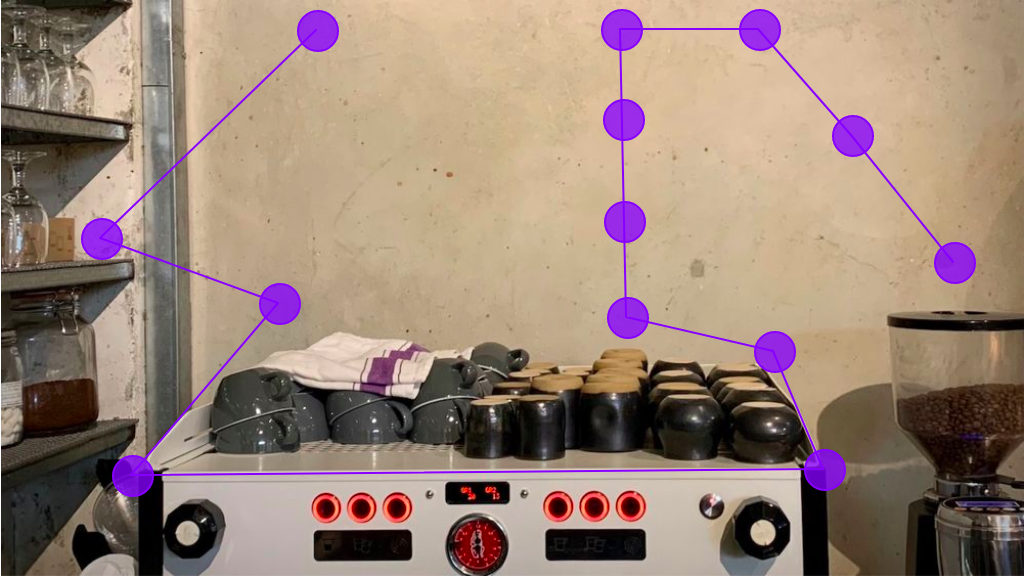
JF - And finally, how was your experience with our Exhibition Tool? What kind of adaptations and changes you had to deal with when transforming the on-site show into a digital exhibition? Were the artists involved in this process?
DR - Art Curator Grid’s Exhibition Tool is, hands down, one of the most enriching platforms I have interacted with. In the past, I had been frustrated about not having a place to present my work in an innovative way, let alone meet people working on curation. The Exhibition Tool made me rethink the exhibition with my logistics collaborator, Emilia Vieira Branco. The biggest challenge was to decide what digital flow to give to an exhibition that happened at a cafe with so many wall spaces. We ended up choosing a new structure: grouping the works by artist, and then color palette, shapes, and forms. Similarly, it was interesting to think about the background image for the exhibition, we went over many many options, until we reached one that we are comfortable with.
As soon as the possibility of transforming the exhibition came up, the artists heard about it. I have sent them a couple of video updates about the platform and also mentioned in writing what the new implications of having a showcase online are. The artists have been super proactive with submitting their bios, files, and making sure everything is ready for a successful and long-lasting presence on the web. They have also checked out other exhibition examples on Art Curator Grid. Overall, we are all very grateful and motivated to see WAW in a new shape and hopefully reach more people.
WAW - we are wondering
Curated by Daniel H. Rey
Artists Ziad Al Najjar, Maryam AlHuraiz, Mariam Alkatheeri, Lubnah Ansari, Zeid Jaouni, and Lily Wallis
On view from February 19
Exclusively on Art Curator Grid
Would you also like to have your institution profile on our platform and curate digital shows with our Exhibition Tool? Send an email to hello@artcuratorgrid.com and we will show you how!